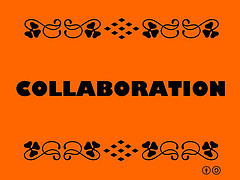|
|
|
Thursday, September 27th, 2018

If you have been following then you saw I took on a new role recently. So far the role has been great and very fulfilling. I have begun diving into what my role is, have started taking ownership and also learning the quirks of my co-workers.
Something that is quite new to me is the fact that I no longer have an office and am in a more open office floor plan setting. It has made me think about how do I like to work and interact with others?
A couple of positive points about working in a more open setting. You always have someone to talk to, it enables easy collaboration and quick huddles with your team to address a challenge.
I also like to hear my colleagues on the phone (we do inside sales), not to listen in, but to get a sense for what best practices look like when I hear them. I have also found that I tend to be a bit more focused on my work when others are around. I can pop on my headphones, listen to music and get into the flow.
There are some definite downsides to an open plan. No privacy. I don’t have a ton of personal calls during the day, but it does happen I have to go out to the elevator bank or a conference room to speak.
Instant collaboration…about fantasy football. Quick way to get out of the flow. And for every best practices call there are a ton where you want to smack your head for hearing something so dumb being said.
And if your headphones are missing then I hope you can grind through and block out the conversations around you.
I don’t have an answer on what is better for an office space, but I do appreciate that my company has break rooms, conference rooms and quiet areas to take calls or work if needed. I can go lounge on a couch if I want and do some work, no one is going to say anything.
So in the end I am satisfied. I get to enjoy my work, go to our onsite gym and drink unlimited amounts of La Croix.
Image credit: Mike_fleming
Posted in Personal Growth, Retention, Ryan's Journal | No Comments »
Friday, June 22nd, 2018

A Friday series exploring Startups and the people who make them go. Read all If the Shoe Fits posts here.
It’s almost impossible to find a company, let alone a startup, that doesn’t swear by agile product development.
But what about applying agile for to other areas, especially other human areas? Specifically, bosses.
We’ve all heard bosses at all levels blather on about creating an agile organization and being an agile leader, but seen little proof they are accomplishing it.
Ever wonder why?
To embrace agile bosses themselves often need to change.
So, while the answer is simple, implementation is not.
As Steve Denning said in 2016, Agile Is A Mindset, Not A Methodology; a few months later he did an excellent job explaining agile beyond its roots.
Consider the basic tenets of agile
- Openness. Be receptive to feedback on your own behavior and activities.
- Trust. Feel comfortable that not everything will be planned; let trial and error show the right direction.
- Collaboration. Go for the greater good of the company, which is not necessarily good for a particular unit.
- No Ego. Have everyone speak with one voice—as an organization.
- Transparency. Call out those unwilling to change or to reflect the “new world.”
- Accountability. Hold one another accountable.
Bosses whose preferred management style runs to command and control, ignore it and hide, benign neglect, or combinations thereof dictated by events are not only uncomfortable with agile, but downright resistant to it.
No one is saying that agile is perfect, but refuting the standard objections is pretty easy.
All of this is just more proof of the accuracy of my company’s tagline: To change what they do change how you think.
Image credit: HikingArtist
Posted in Communication, Culture, Personal Growth | No Comments »
Wednesday, May 13th, 2015

It’s impressive when a market set to double from roughly $4+ billion to $8+ billion by 2019 doesn’t really solve the problem it claims to solve.
Huh?
The market is collaboration software and, based on new research, it only works for half the problem.
Unfortunately, it turns out that inducing more collaboration may hinder the most important part of problem-solving: actually solving the problem. While connecting employees does increase the ability to gather facts during the early stages of tackling a problem, it also inhibits the ability to analyze those facts and find a solution.
The 21st Century approach that’s been pushed by academics and the collaboration industry has been supported only by research done separately on the two halves.
Solving any problem requires two distinct steps,
- Collecting data
- Analyzing and using the data.
The first responds well to collaboration; a variety of people with different experiences and world-views are less likely to homogenize their information-gathering.
… the most-clustered groups gathered 5 percent more information than the least-clustered groups…
However, the gain didn’t carry over to a solution.
Clustering also seemed to inhibit the breadth and number of answers that the players proposed. The least-connected networks came up with 17.5 percent more theories and solutions than did the most-connected networks.
17.5% is a significant number — especially when it’s your organization.
Collaboration is a marvelous tool, but it’s not a silver bullet.
As with most good tools it needs to be used where and when it works.
Flickr image credit: Ron Mader
Posted in Change, Culture, Motivation | No Comments »
Friday, April 25th, 2014
A Friday series exploring Startups and the people who make them go. Read all If the Shoe Fits posts here
 Yet again Sarah Milstein and her crew at Lean Startup have knocked it out of the ball park. The first time I experienced it was at their Lean Startup Conference last year. With the new Office Optional Conference, they have tapped into a motherload of issues that affect the Future of Knowledge Work and Workers. Companies both large and small are struggling with attracting, growing, retaining and managing distributed teams, just like an increasing portion of the workforce is enticed by the ability to work from home (or anywhere). Yet again Sarah Milstein and her crew at Lean Startup have knocked it out of the ball park. The first time I experienced it was at their Lean Startup Conference last year. With the new Office Optional Conference, they have tapped into a motherload of issues that affect the Future of Knowledge Work and Workers. Companies both large and small are struggling with attracting, growing, retaining and managing distributed teams, just like an increasing portion of the workforce is enticed by the ability to work from home (or anywhere).
I attended with Galina Landes who leads our engineering team, and one of the great experiences was to see how differently she and I experienced distributed work and strategies for improving what we’re doing. But then, engineers have always had a more logical approach to most things than those of us working in management or other functions in a company. Combining our perspectives and discussing strategies was interesting and very productive.
This conference on distributed teams dealt with collaboration, communication and the tools necessary for achieving goals as a team and creating a positive work environment. I’ve personally struggled with this in my previous company and now as we are building a new one. Our small team is fully distributed, although several of us are in the San Francisco Bay Area and can meet face to face when necessary. But it’s still challenging to build a company culture, have good communication and trust without which we can’t achieve our strategic goals.
Personally, I got a lot of ideas for tools and strategies to enhance our collaboration and communication. In addition, many of the speakers spoke about the need to create an environment where “water cooler talk” and informal communication (and interruptions) was acceptable. Just like in a normal office environment. After all, we human beings are (mostly) social creatures and need to create bonds and trust with those with whom we work to achieve goals.
It was a pleasure to see that so many people from large organizations such as GE to small startups like EMANIO, and everything in-between, dealing with the issues around an increasingly distributed workforce. In interacting with fellow participants, it was clear that we were all neophytes in the area and even those organizations that successfully had deployed a distributed model were still learning and adjusting their strategies and methods. Office Optional was a great learning experience and I’d exhort anyone dealing with these issues to participate next time they put it on. It was invaluable for us.
My only negative feedback would be that toward the latter part, the speakers became a bit repetitive. However, for a first conference small issues like this should be expected and judging from my prior experience with the Lean Startup team the next one will excellent.
The day ended with a conversation between Eric Ries, who wrote The Lean Startup, and Stanford’s Bob Sutton, who penned the No Asshole Rule, and more recently, Scaling Up Excellence. Though the conference would have been very good on its own, this was the crowning part of my experience. Professor Sutton is an engaged and charismatic speaker with deep knowledge of how organizations work. Excellence is what we’re all striving for and he provided a captivating roadmap for how to achieve it.
Image credit: HikingArtist
Posted in If the Shoe Fits | No Comments »
Tuesday, January 8th, 2013
 Silos—they are found in almost every company no matter the size. Silos—they are found in almost every company no matter the size.
Silos are the scourge of collaboration
The most commonly noticed are departmental silos, but horizontal silos based on position and education are far more insidious and damaging.
I loathe horizontal silos and consider them second only to politics on the corporate stupidity index.
More times than I can count I’ve seen the ideas of an engineer 1 or 2 discounted or ignored by the 3s and senior engineers—of course, that’s better than stealing them, although that happens, too.
The attitude seems to be one of ‘your brain is incapable of any creative thinking until you are at least at my pay grade’, which is beyond idiotic.
People’s brains work differently; some see what is, others see possible improvements and a few see around corners, but that sight has little to do with position.
Steve Jobs saw around the corner of the personal computer market before there was a personal computer market and certainly before he had any credibility what so ever.
And I can personally attest that training and education don’t necessarily play a role. Decades ago I redesigned two street intersections where I lived in San Francisco, but I didn’t suggest the solutions to the traffic engineers—I knew they wouldn’t listen because I have no training.
Instead, I sneaked both ideas in through someone I know who was ‘accepted’ and both solutions are still in effect today.
Silos are built of egos, which is why, vertical or horizontal, they’re so difficult to break down.
The best solution is for CEOs to build a culture that values everybody’s ideas equally, but there’s no guarantee that they will or even that they agree.
Even when they do there’s you can’t count on every executive and others in management roles will embrace the approach.
Technology offers a leg up for bosses who see silos as blockades.
One approach I helped a client implement created an innovation wiki that completely obscured the name, level, grade and even department of the person posting the suggestion.
Each idea had a different ID and confirmation was automatically sent to the poster so they still had bragging rights if it was used or warranted a bonus.
That anonymity leveled the playing field and assured everyone that each idea was considered strictly on its merits, not on the merits of the person who thought of it.
It also encouraged people to post way-outside-the-box ideas without worrying about appearing silly, pushy or arrogant if the idea happened to be outside of their personal expertise.
Finally, when an idea was used, whether all, in part or as a springboard to something else, there was an announcement, kudos and request that the poster step forward and take a bow.
It’s a very popular program.
Productivity skyrocketed as a river of suggestions flowed that offered solutions to long-time problems, ideas for product enhancements and even next-gen products—often from the most unlikely places.
Flickr image credit: johnny goldstein
Posted in Communication, Culture, Ducks In A Row, Motivation | No Comments »
Monday, September 14th, 2009
Silos kill, no question about it.
They kill innovation, retard product development, and encourage reinvention of the wheel.
Some companies encourage silos; some have no clue on how to break them down; and a very few don’t have them.
Instead, they have collaboration across not only departments, but also divisions.
 3M is such a company, with collaboration embedded deep within its DNA. 3M is such a company, with collaboration embedded deep within its DNA.
3M is one of the few companies in private industry that is still active in basic research; it pays off because the results are immediately available to the R&D groups.
What’s the secret to fostering this kind of culture; to getting disparate individuals and organizations working together?
Collaboration doesn’t happen by accident.
- The company maintains a “…database of technical reports written by the more than 7,000 scientists at the company. Those scientists are spread between a corporate lab devoted to basic research, 40 division labs that essentially form a bridge between that basic science and the market, and 35 international labs.”
- It enables “TechForum, an employee-run organization designed to foster communications between scientists in different labs or divisions.”
- “Three years ago, 3M also created the “R&D Workcenter” networking Web site, which Mitra describes as a “LinkedIn for 3M scientists.”
But 3M knows that all the technology, all the meet-ups and all the talk aren’t always enough—the wrong kind of competition will quickly kill collaboration.
“Such sharing of resources is almost impossible when different units of a company feel they are competing against each other to deliver better financial results or the next breakthrough technology. But at 3M, employees are expected to collaborate—and are evaluated on their success.”
3M clearly tells its employees at all levels that they are expected to share across all boundaries, but just telling people doesn’t always work. It’s easy to share information without the added intelligence that makes the information truly valuable.
So they measure the success of the effort, not just the act. That is very different—it puts the money where the mouth is and taps into employees’ vested self-interest.
Image credit: Wesley Fryer on flickr
Posted in Business info, Communication, Compensation, Culture, Innovation, Motivation, Retention | 1 Comment »
Monday, September 7th, 2009
This is innovation week and today’s story is about a company that almost committed corporate suicide before changing its ways.
I’m talking about IBM.
If you’re old enough, or you like business history, you’ll remember how what started as one of the most innovative companies to ever exist turned inward, building up a stifling culture that dictated everything right down to the length of socks worn by its sales force.
The company trusted no, one including it’s own employees, and development was spread to different facilities so no one except a chosen few knew how product were developed or built.
IBM’s cultural turn around started with Lou Gerstner and has continued apace under current CEO Sam Palmisano.
In spite of the economy, IBM hasn’t cut its basic research staff numbering 2000 in the US and another 1000 around the world. It dwarfs Microsoft’s (1000) and leaves HP a distant third.
Its newest initiative is collaboration on a scale that’s never been seen.
I call it extreme innovation.
“IBM, meanwhile, is prowling the world to set up what it calls “collaboratories,” which match up its researchers with experts from governments, universities, and companies.” John E. Kelly III, director of IBM Research, says, “The world is our lab now.”
This is way beyond the open innovation other companies are doing “by making collaboration with outsiders an essential piece of its research strategy.”
Will it work? No one knows.
Is it a smart move? Yes, if your goal is to be a corporate leader decades from now.
Does it make sense?
The brain power to solve the world’s problems has no boundaries, transcending geography, race, religion and is gender neutral.
Is there a choice?
Image credit: hyku
Posted in Business info, Communication, Culture, Innovation, Leadership | No Comments »
Friday, July 11th, 2008
Image credit: danzo08 CC license
 A couple of weeks ago I mentioned a discussion going on at Business Week, offering readers the chance to weigh in and comment on serious workplace topics. My error was in misreading that June 30 was the last day to comment—the discussion is still going on. Additionally, there’s a place to offer up stories, pictures and videos of your own wacky experiences in the workplace or just to enjoy others’. A couple of weeks ago I mentioned a discussion going on at Business Week, offering readers the chance to weigh in and comment on serious workplace topics. My error was in misreading that June 30 was the last day to comment—the discussion is still going on. Additionally, there’s a place to offer up stories, pictures and videos of your own wacky experiences in the workplace or just to enjoy others’.
Posted in Business info, Communication, Culture, Motivation, Personal Growth | No Comments »
Monday, May 5th, 2008
Whether I’m socially disabled or just plain antisocial I’m the last person you want to ask about social media tools and whether/how to use them—but I keep getting asked. So when I accidentally fell into a dialog with Stephen Collins, Founder and Chief Troublemaker at acidlabs, during a thread on LinkedInBloggers (a yahoo e group) I asked him if he’d be willing to share some of his knowledge and he said yes.
 According to Stephen, ‘he’s a frequently self-appointed tricky problem solver driven by a need to help people and organisations effect change in their capacity to retain, distribute and share knowledge.’ According to Stephen, ‘he’s a frequently self-appointed tricky problem solver driven by a need to help people and organisations effect change in their capacity to retain, distribute and share knowledge.’
Without more ado, here’s Stephen.
Why you should be using social tools in your organisation
Just the other day, I read this comment from an accountant on a newspaper article about social networking in business:
‘Interesting info about Twitter – yes I was in that group that thought it would never catch on! Maybe I could send riveting reminders about when [sales tax] is due :)’
The writer’s offhand comment is actually not too far off the mark. This type of use is actually appropriate for a tool like Twitter and matches fairly closely with other emerging business use of Twitter where smart, social network aware organisations are using it as a channel to keep their community abreast of current happenings.
With a growing number of major businesses such as IBM, SAP, Janssen- Cilag and Morgan Stanley using social tools inside and across the wall to manage collaboration efforts, networking and communications, any organisation that simply discounts social tools as an effective medium is doing themselves a disservice. The cries of ‘time wasting’ and ‘not for business’ are ever more clearly wrong and often made by those who are dismissing social tools without looking to understand.
Now, let it be very clearly said that open slather is not the way to go for most businesses. Letting people muck about all day, grooming their Facebook profile is, frankly, less an issue of time wasting and more a matter of good people management.
Appropriate use policies that are very clear on what is and isn’t allowed and careful steps towards use and understanding are the way to go. As an independent consultant this is advice I give to my clients as I speak to them about the opportunity social tools offer them in terms of staff attraction, engagement and retention, for knowledge and information management and for collaboration. A little research is all that’s needed to find a wealth of information to support this position.
My business uses social tools as a core part of the way I deal with clients and peers around the world. Using these tools has afforded me opportunities to become engaged in communities and work that might otherwise never have crossed my radar. In the last year, I’ve presented at a conference in the USA (I live in Australia) and met in real life in excess of 100 new and interesting people I might otherwise never have crossed paths with. Every one of those opportunities was as a direct result of the networking and information and knowledge sharing opportunities opened to me by using social networking tools.
I am a regular user of Twitter (probably one of the most prolific Aussies, actually), I use Facebook to track what my professional communities (and friends) are up to and are talking about, I use LinkedIn for strictly business networking and to ask and answer relevant questions, I use Upcoming to track and note my attendance at various events and I use several other social networks for their specific purposes – Flickr for photos, delicious and Magnolia for bookmarking, TripIt and Dopplr for travel and meeting coordination and BrightKite (a new network) for tracking location and arranging serendipitous connections with colleagues, peers and friends. I also blog and use tools like Google Calendar, BaseCamp and Google Docs to keep track and store information that is important to me and my clients.
There’s no reason your organization couldn’t be doing the same. If it’s good enough for Downing Street, who are officially blogging, using Twitter, YouTube and Flickr and significantly opening up the British government to constituent participation, it’s probably good enough for your organisation. As an Australian, I only hope that our Prime Minister sees what’s happening in Britain and does something similar.
I would be more than happy to have a conversation with you or anyone else reading this post about how social tools can help you build brand and community for you and your organisation. My contact details are very public – you can find them at http://www.acidlabs.org/
Posted in Business info, Communication, Culture | No Comments »
|
 Subscribe to
Subscribe to
MAPping Company Success
About Miki 
Clarify your exec summary, website, etc.
Have a quick question or just want to chat? Feel free to write or call me at 360.335.8054
The 12 Ingredients of a Fillable Req
CheatSheet for InterviewERS
CheatSheet for InterviewEEs™
Give your mind a rest. Here are 4 quick ways to get rid of kinks, break a logjam or juice your creativity!
Creative mousing
Bubblewrap!
Animal innovation
Brain teaser
The latest disaster is here at home; donate to the East Coast recovery efforts now!
Text REDCROSS to 90999 to make a $10 donation or call 00.733.2767. $10 really really does make a difference and you'll never miss it.
And always donate what you can whenever you can
The following accept cash and in-kind donations: Doctors Without Borders, UNICEF, Red Cross, World Food Program, Save the Children
*/
?>About Miki
About KG
Clarify your exec summary, website, marketing collateral, etc.
Have a question or just want to chat @ no cost? Feel free to write
Download useful assistance now.
Entrepreneurs face difficulties that are hard for most people to imagine, let alone understand. You can find anonymous help and connections that do understand at 7 cups of tea.
Crises never end.
$10 really does make a difference and you’ll never miss it,
while $10 a month has exponential power.
Always donate what you can whenever you can.
The following accept cash and in-kind donations:
|







 Yet again Sarah Milstein and her crew at Lean Startup have knocked it out of the ball park. The first time I experienced it was at their Lean Startup Conference last year. With the new
Yet again Sarah Milstein and her crew at Lean Startup have knocked it out of the ball park. The first time I experienced it was at their Lean Startup Conference last year. With the new  Silos—they are found in almost every company no matter the size.
Silos—they are found in almost every company no matter the size.

 A couple of weeks ago I
A couple of weeks ago I 

